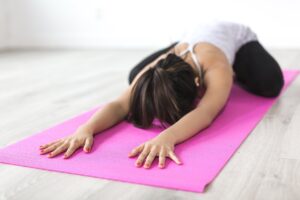Introduction: Why Yoga Matters More Than Ever
In an age where stress, fatigue, and sedentary lifestyles have become the norm, yoga offers a time-tested solution for holistic well-being. Whether you’re a child, a working adult, or a senior citizen, yoga meets you where you are. It’s not just physical exercise—it’s a powerful mind-body practice that strengthens muscles, enhances mood, and nourishes your internal organs.
If you’re wondering which style of yoga is best for your body, your emotions, or your daily schedule, this blog will guide you through it all.
The Health Benefits of Yoga: More Than Just Flexibility
Yoga is celebrated globally not just for increasing flexibility but for its profound health benefits across all systems of the body:
-
Improves posture and spinal health
-
Boosts cardiovascular function and lung capacity
-
Regulates metabolism and supports digestion
-
Strengthens the immune system
-
Lowers blood pressure and cholesterol
-
Enhances joint health and muscle strength
Breathing techniques (Pranayama) stimulate the parasympathetic nervous system, reducing stress and improving oxygen delivery to organs like the lungs, heart, brain, and liver.
Emotional & Mental Wellness Through Yoga
The emotional benefits of yoga are just as powerful:
-
Reduces anxiety and symptoms of depression
-
Improves focus, mindfulness, and clarity
-
Encourages self-awareness and emotional regulation
-
Enhances resilience and stress management
Meditative practices and gentle movements help release stored tension, supporting better sleep and an overall sense of calm.
Popular Styles of Yoga and Who They’re Best For
1. Hatha Yoga – Perfect for Beginners and Seniors
A gentle introduction to basic poses and breathing. Ideal for:
-
Improving mobility
-
Learning proper alignment
-
Reducing anxiety
2. Vinyasa Yoga – Great for Young Adults and Fitness Enthusiasts
A dynamic flow where breath connects every movement. It builds:
-
Cardiovascular endurance
-
Muscle tone
-
Mental focus
3. Yin Yoga – Excellent for Deep Stretching and Emotional Release
Slow, passive postures held for minutes to stretch connective tissues. It helps:
-
Release trauma stored in the body
-
Calm the nervous system
-
Improve flexibility
4. Restorative Yoga – Ideal for Burnout, Seniors, and Healing
Very gentle yoga with props for support. Great for:
-
Recovery from illness or surgery
-
Chronic fatigue and insomnia
-
Mental rejuvenation
5. Ashtanga Yoga – Best for Advanced Practitioners
A rigorous, structured sequence to build discipline. Benefits include:
-
Strong muscle development
-
Detoxification through sweat
-
Sharpened mental control
6. Kundalini Yoga – For Spiritual Seekers
Combines mantra, breathwork, and asanas to awaken energy centers (chakras). It supports:
-
Emotional balance
-
Mental awakening
-
Energy flows through internal organs
7. Chair Yoga – Specially Designed for Seniors and Office Workers
Gentle yoga done sitting or using a chair for support. Helps with:
-
Mobility in joints
-
Circulation
-
Stress reduction at the desk
Yoga for All Age Groups
🧒 Children (5–12 Years)
Benefits:
-
Develops balance, coordination, and focus
-
Improves behavior and emotional control
Recommended Styles: -
Hatha Yoga, Partner Yoga, Fun Flow
Tip: Include storytelling or animal poses to keep it engaging.
👩💻 Adults (20–50 Years)
Benefits:
-
Reduces work stress and back pain
-
Improves strength and stamina
Recommended Styles: -
Vinyasa, Ashtanga, Yin for flexibility
Tip: Use short 20–30 min sessions daily, especially in the morning or evening.
👵 Elders (60+ Years)
Benefits:
-
Enhances balance and reduces risk of falls
-
Helps with arthritis, joint stiffness
Recommended Styles: -
Chair Yoga, Restorative, Hatha
Tip: Practice near sunrise for peaceful energy and digestion boost.
How Yoga Positively Affects Internal Organs
-
Heart: Improves circulation and reduces inflammation
-
Lungs: Pranayama expands lung capacity and clears toxins
-
Liver: Twisting poses stimulate liver detox
-
Digestive Tract: Forward bends and twists improve digestion and reduce bloating
-
Kidneys: Hydrating postures support kidney filtration
-
Brain: Meditation and breathwork calm the mind and increase serotonin levels
Creating a Daily Yoga Routine (Sample Schedule)
A consistent routine amplifies yoga’s benefits. Here’s a balanced plan:
🌞 Morning (10–20 mins)
-
Tadasana (Mountain Pose)
-
Surya Namaskar (Sun Salutation) – 3–5 rounds
-
Bhujangasana (Cobra Pose)
-
Pranayama – 5 minutes of deep breathing
-
Meditation (2 mins silence)
Benefits: Boosts energy, sharpens focus, aligns the spine
🕒 Afternoon Break (5–10 mins)
-
Neck rolls
-
Seated Forward Bend
-
Cat-Cow Stretch
-
Anulom Vilom breathing
Benefits: Relieves mental fatigue and posture stress from sitting
🌙 Evening Wind Down (15 mins)
-
Legs-Up-the-Wall Pose (Viparita Karani)
-
Butterfly Pose
-
Supine Twist
-
Shavasana (Corpse Pose)
-
Gratitude journaling or light meditation
Benefits: Supports digestion, releases the day’s tension, enhances sleep
Tips to Create a Calm Yoga Atmosphere at Home
-
Use soft lighting or candles
-
Play soothing instrumental or nature sounds
-
Keep your yoga mat clean and sacred
-
Add indoor plants or incense for grounding energy
-
Avoid phones or screens during practice
Conclusion: Embrace the Yoga Lifestyle Today
Understanding the different styles of yoga practices lets you tailor your journey based on your goals, age, and lifestyle. Whether you seek physical vitality, emotional balance, or spiritual insight, yoga offers a path forward—one breath, one pose, one moment at a time.
Start today—even with just 10 minutes. Your body, mind, and soul will thank you.

